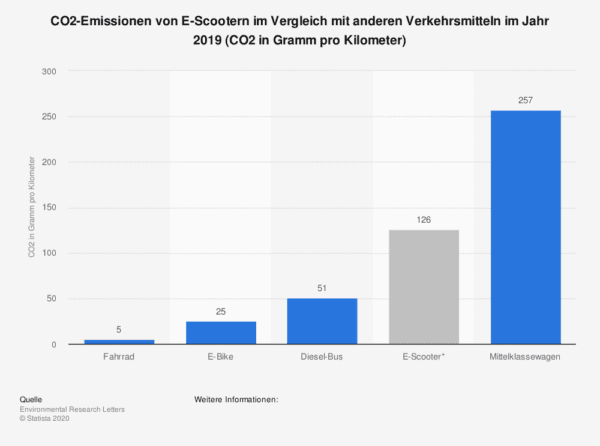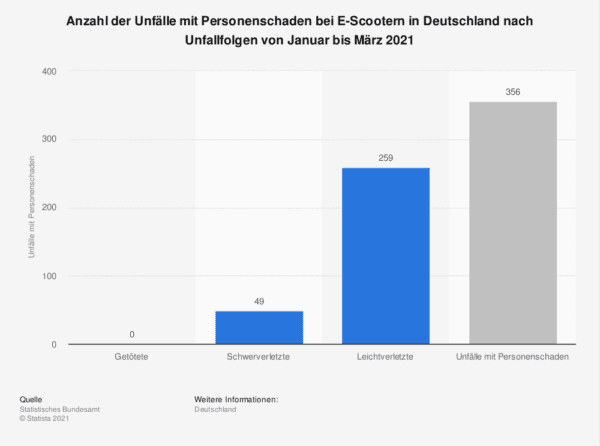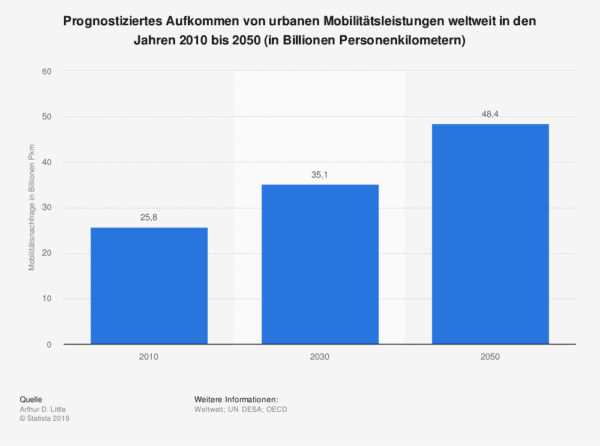E-bikes, e-scooters, and so on – micromobility includes all means of transport that offer space for a maximum of two people and are suitable for shorter distances. To be more precise, in most cases these are electrically powered vehicles. These are grouped together under the term “miniature electric vehicles“. The focus of micromobility is on resource-saving and flexible locomotion as well as relieving the burden on road traffic. These micro-vehicles mainly offer a solution in overcrowded big cities and are gaining more and more importance nowadays. Micromobility is revolutionizing the way we get around.
What makes micromobiles so special?
One important aspect of micromobility is flexibility in getting around. Nowadays, the focus is primarily on what is known as “shared mobility” or “mobility as a service (MaaS)“. This means booking mobility online when you need it. Various vehicles and different types of vehicle use are offered via a central platform. Interested parties can therefore choose the right vehicle for the route they want to take. In most cases, the principle of “free-floating” applies. This allows the driver to park the micromobile anywhere, so there is no fixed return location. In addition, the provider is responsible for charging and maintaining the vehicle. Other advantages are that the user can avoid traffic jams within the city and the problem of the annoying search for a parking space is eliminated.
Great potential is seen above all in the so-called first and last mile. Here, micromobility is linked with public transport: for example, the e-scooter can be used instead of the car for the journey to the S-Bahn or the journey from the S-Bahn to the workplace. As a result, resources are conserved and emissions are reduced. Micromobility benefits the environment and the general public by improving the air in cities while providing flexible transportation for urban society.
Regulations and restrictions within micromobility
Due to the ever-increasing importance of micro electric vehicles in recent years, an ordinance with current regulations was put into effect in June 2019. Basically, people 14 years and older are allowed to use electric vehicles. Possession of a driver’s license is not necessary for this purpose. The use of e-vehicles is permitted in public areas, provided they are limited to the maximum speed of 20 km/h and have a steering or stop bar. Operation is only permitted on inner-city roads and cycle paths and therefore not on sidewalks or motorways. In addition, traffic safety requirements, for example in the area of braking and lighting systems and electrical safety, must be ensured.
So far, some questions remain unanswered
Despite some advantages and opportunities in the field of micromobility, some serious problems still remain to be solved today. For one thing, there is the question of how environmentally friendly electric vehicles really are when the factors of production, battery and the expense of maintenance are taken into account. A large proportion of e-scooters are produced in China, largely using energy from coal-fired power plants. In addition, there is a high environmental impact in the production of the batteries due to the use of rare raw materials.

In the statistics shown, initial research on the environmental footprint of e-scooters in 2019 is presented. It is clear that the electric scooters, with approximately 130 grams of CO2 per kilometer, performed significantly better than a mid-range passenger car. Compared to a diesel-powered vehicle, however, the smallest vehicles are not in a good light: they emit twice as much CO2 as a diesel-powered bus.
Basically, e-vehicles only make environmental sense if they replace car or motorcycle trips. The more people use micromobility as a new means of transportation, the less people will then potentially resort to cars in the inner city area. Furthermore, wildly parked e-scooters and scooters create a social nuisance. Although the providers’ apps mark the areas where the scooters may be parked, it is not uncommon to find the e-scooters in rivers, in the middle of the sidewalk or even on trees. Locating the offender is almost impossible in most cases, which is why the providers have to bear the costs of disposal. So far, it is still questionable which further measures will be considered here. In addition, the aspect of road safety has not yet been sufficiently examined: Currently, there is no helmet obligation.

The illustrated statistics show that in the months from January to March 2021, a total of 356 accidents with personal injury were recorded when using very small electric vehicles, and in 49 cases there were serious injuries. One of the reasons cited for the high number of accidents is that it is not possible to tell exactly when the e-scooter driver is accelerating or braking.
Micromobility meets IAA
Under the motto “How do we want to move in the city of the future?”, mobility was examined from other angles for the first time at the IAA 2021 in Munich. These included sustainable and urban mobility, innovative public transport and intelligent infrastructure. A total of 109 exhibitors presented their visions of sustainable mobility in these thematic areas. Classic car manufacturers such as Porsche, VW or BMW followed the latest trend of the bicycle and presented their innovations. Young companies and start-ups also had a strong hand in the micromobility sector at this year’s IAA Mobility. Visitors were able to experience inner-city mobility first-hand, for example, from BMW X2City and other vehicles on a parcour or during guided tours.
Although opinions differ on the presentation of micromobility at a previously car-only trade show, the new mobility seems to be a complete success: The transformation of mobility is moving in the direction of digitalization and sustainability – and this has been implemented through the new concept of IAA Mobility. It is also clear that there has long been more than just the car or the e-bike, but that mobility options are being combined to create solutions for both rural and metropolitan regions.
Meanwhile, the IAA is considered the largest mobility event in the world.
Where is the micromobility journey headed?
The global forecast for micro electric vehicles over the next few years is promising, according to the statistics below. According to the report, the demand for inner-city mobility continues to rise. While in 2010 the global demand of micromobility was 25.8 trillion passenger kilometers, it is expected to increase to 48.4 trillion passenger kilometers by 2050.

According to a study by the world’s leading management consultancy McKinsey & Company, micromobility will generate up to $150 billion in Europe by 2030, and as much as $500 billion worldwide. The market for micro electric vehicles is growing two to three times faster than car sharing or e-hailing services. These include apps for mobility.
It therefore remains exciting to what extent electromobility will continue to develop and whether the majority will soon be turning to e-scooters instead of their own cars. We at magility will keep an eye on further developments for you.
In order not to miss any blog articles in the future and to be informed about the latest news at the same time, please follow us on LinkedIn.



